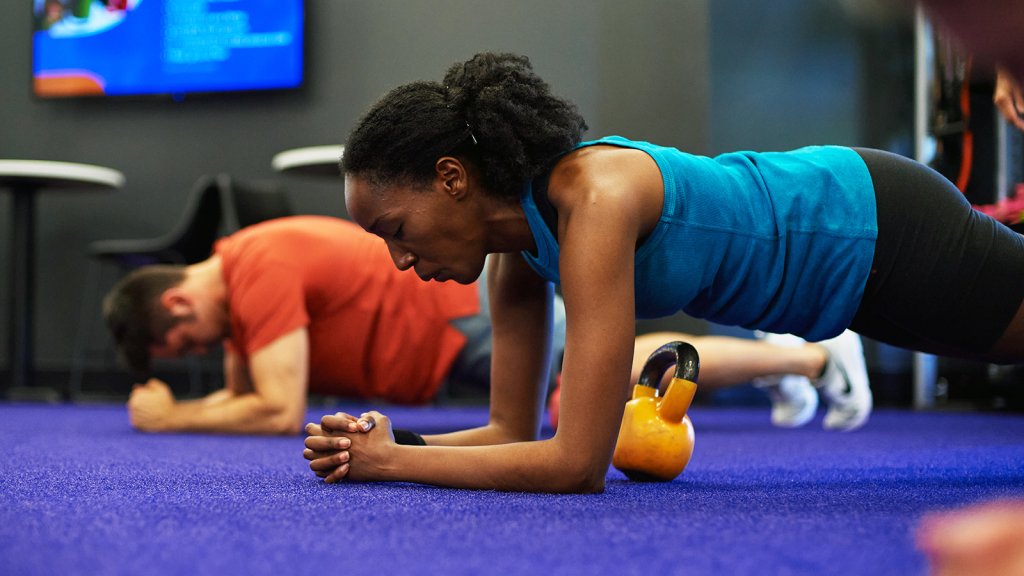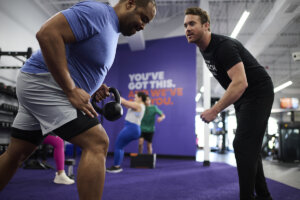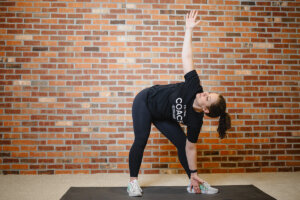Running short on time or looking for a fun way to break out of your workout rut? We have your solution: Circuit training. If you’ve ever done a group fitness class or a high-intensity interval workout, chances are you’ve done a circuit workout without even knowing it!
What is circuit training?
Circuit training is a workout that typically includes 8-10 different exercises, usually referred to as stations. You perform each station for a certain amount of time (or for a specific number of reps), before quickly moving to the next one. Because the format includes limited rest in between movements and rounds, circuit workouts move fast, meaning they can be done in 20 minutes or less.
Circuit training workouts combine a mix of endurance- and strength-based exercises, so that you’re building muscle while increasing your heart rate at the same time. Even if your stations are only strength training exercises, you still get a form of cardio exercise due to the limited rest periods in between movements — win! Circuits can focus on different muscle groups such as upper body, lower body, or core, or they may be a combination of them all for an entire body workout.
Before we jump more into how circuit training works, we want to clear one thing up: Circuit training doesn’t always equal HIIT (high-intensity interval training). While a HIIT workout is still considered a circuit workout (confusing, we know), the difference lies in the way they’re performed. A circuit workout is focused more on what you’re doing, whereas a HIIT workout is focused on how you’re doing it. Let us explain.
How does circuit training work?
In a circuit workout, stations are chosen strategically. For instance, the goal is to move from a lower body exercise, like lunges, to an upper body exercise, like push-ups. While you’re performing push-ups, your legs are resting, which means you can move right onto another lower body exercise without needing to rest in between. While the limited rest periods allow these workouts to have a cardio aspect, the primary focus is to build muscle and strengthen bones. In order to do this, you need to challenge yourself with weight and resistance and pay special attention to your form for all of your reps.
Meanwhile, the goal of interval workouts is to spike your heart rate and improve cardiovascular strength, and you do this through varying spurts of intensity. For example, you might jog on the treadmill at a moderate pace for 30 seconds, and then sprint all-out for 30 seconds, and recover with a 60-second brisk walk.
Neither method is considered better, although they do use different exercises that provide different benefits and results, so it’s important to learn which method is best for you and your fitness goals. Here are just a few reasons why we love circuit training.
Benefits of circuit training workouts
Less time training, more results
If you’re trying to live a healthy lifestyle with a busy schedule, a circuit workout is an efficient way to knock out a strength training and cardio session all at once. Studies and research show that with a 15- or 30-minute circuit workout, you can build muscle mass, while also burning calories and spiking your metabolism to help with fat and weight loss and getting in better overall shape. Plus, since circuit workouts typically work your entire body through compound exercises, you don’t need to put in extra effort to hit all of the different muscle groups.
Routines are customizable
People have different fitness goals, so it makes sense that people should have different fitness programs, too! From beginners to bodybuilders, and every fitness level in between, circuit workouts are a great way to get your heart pounding, blood pumping, and muscles working. If your goal is weight loss and to get in shape, you’ll want to include a few exercises that increase your heart rate to spike your metabolism and burn maximum calories in your circuit, such as jump rope or mountain climbers. You’ll also want to complete multiple rounds of the circuit. For athletes looking to increase power and build strength, it would be a good idea to add plyometric stations such as squat jumps or step ups. If you’re looking to make your circuit low impact, you could use a resistance band or the machines at your gym instead of exercises on the floor. Remember, with circuit training, you are in charge of the pace and intensity!
Exercise anytime, anywhere
You can do them at the gym with equipment and machines, or do them at home, the park, the beach—literally any place—by incorporating only bodyweight exercises. The options are endless! Plus, if you’re short on time, do just one round; otherwise, do as many as you’d like for a higher intensity level workout! The choices are endless. And because of that, you can do circuit workouts multiple times a week by just switching up the stations.
They’re never boring. Are you someone that tends to get bored of the same workout programs week in and week out? If so, circuit workouts are for you! Not only do they move at a fast pace — which gives your mind no time to think about anything other than what’s next—you’re also changing up the action every 30 seconds to a minute so it’s nearly impossible to get bored. Also, circuits are perfect for groups; start one person at each station and all rotate through until everyone has done each movement! Working out in groups is more fun, and can give you the extra push to work harder, too.
Now that we’ve said our piece, let’s get to one of the main reasons why you’re here: the 15-minute circuit workout that will work every muscle from your head to your toes!
15-minute beginner circuit training workout
Session time: 15 minutes (per round)
Directions: Complete as many reps as you can of each exercise for 60 seconds, take a 15-30 second break, then move to the next exercise.
Equipment: Jump rope, barbell (or pair of dumbbells), bench (or chair)
Difficulty level: Easy to medium
Muscles targeted: Glutes (butt), quads (thighs), hips, core, chest, back, shoulders, biceps and triceps
If you’ve never done a circuit workout before, this is the perfect place to start! This quick but effective workout will teach you the ropes while you work up a sweat. These 10 different exercises alternate between lower body, upper body, and full body movements.
If you’re just beginning your fitness journey, complete each exercise with bodyweight or light weights if you feel comfortable doing so. You should aim to push yourself to get as many quality reps in as possible for the duration of each station, but make sure you’re able to keep proper form for all reps. Remember: It’s not as much about speed as it is strength, power, and control. If you find that you are gasping for your breath at the end of each station, slow your pace slightly and take at least 30 seconds of rest in between sets.
Reps and sets
Perform each exercise for 60 seconds, rest for 15-30 seconds, and move on to the next movement. Remember: the quality of reps is more important than the number of reps completed.
But WAIT! Before you begin, don’t forget to warm up! We suggest a warm-up that engages each body part and gets your muscles ready for the workout ahead, like a quick 3-5 minutes of jump rope to break a quick sweat (if you don’t have an actual rope, try an imaginary jump rope instead!).
Let’s go!: 15-minutes of circuit stations
Alright, now get into the starting position, start the clock, and let’s do it! If you’re unsure of how to do an exercise, keep scrolling for step-by-step instructions:
1. Step-Ups for 60 seconds
Rest for 15-30 seconds
2. Bent-Over Row for 60 seconds
Rest for 15-30 seconds
3. Bodyweight Squats for 60 seconds
Rest for 15-30 seconds
4. Shoulder Press for 60 seconds
Rest for 15-30 seconds
5. Jumping Jacks for 60 seconds
Rest for 15-30 seconds
6. Romanian Deadlift for 60 seconds
Rest for 15-30 seconds
7. Push-Ups for 60 seconds
Rest for 15-30 seconds
8. Glute Bridges for 60 seconds
Rest for 15-30 seconds
9. Triceps Dips for 60 seconds
Rest for 15-30 seconds
10. Plank for 60 seconds
Done!
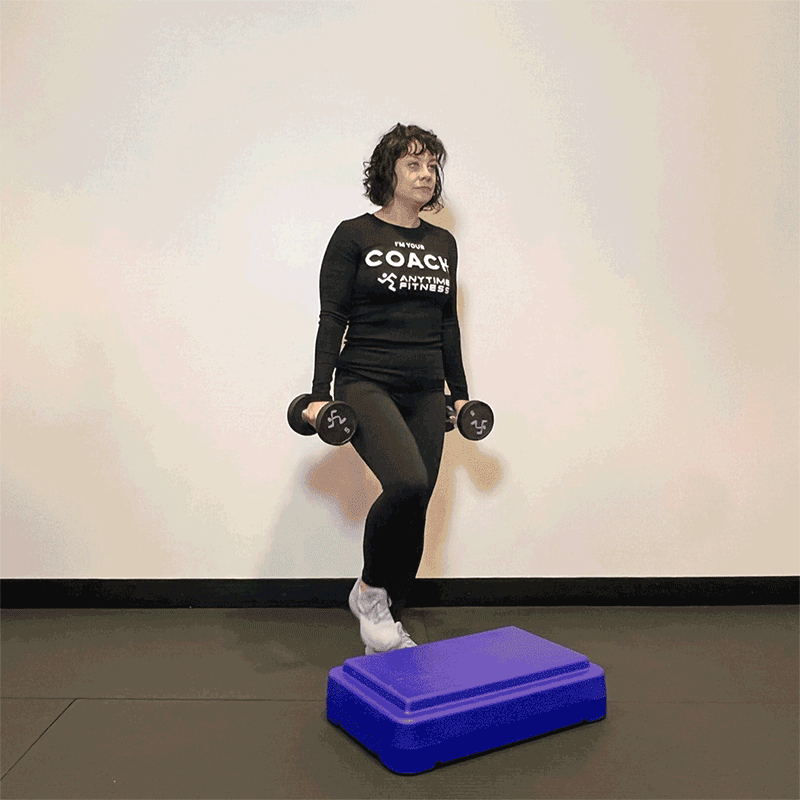
Step-Ups
- Find a sturdy box, step, or bench and hold a dumbbell in your hands, or a barbell across your shoulders.
- Step your right foot and right leg on top of the box first, followed by your left foot. Then step your left foot down first, followed by your right foot.
- Repeat. If you just stepped up with your right foot, be sure to lead with your left next to make sure you get equal reps on your left leg and right leg.
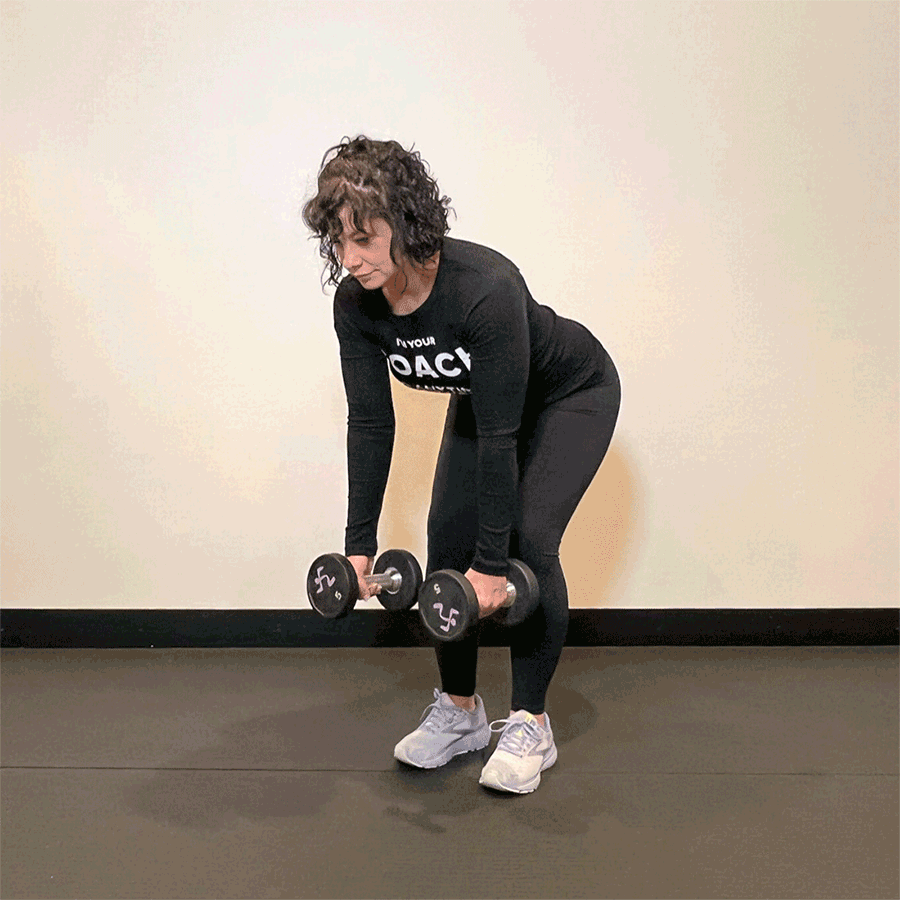
Bent-Over Rows
- Hold a dumbbell in each hand, or a barbell, and bend at the hips to form a 45-degree angle.
- Keep your back flat, shoulders back, and chest up, as you lift the weights straight up to your chest.
- With control, return the weight back towards the floor to the beginning position. Repeat.
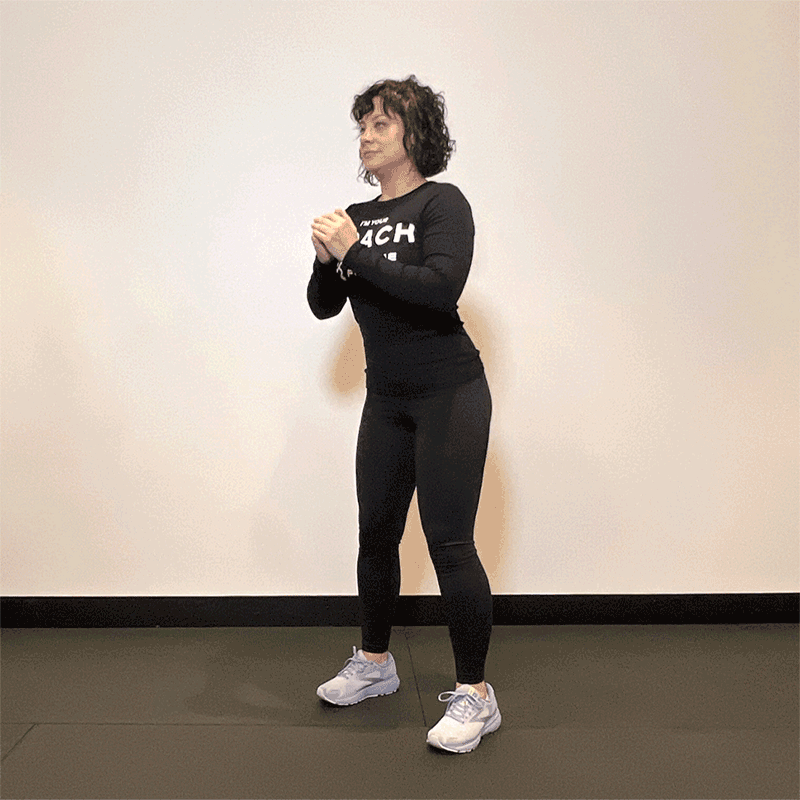
Bodyweight Squats
- Place your feet flat on the floor, about shoulder-width apart. Keeping your chest up, lower your body to the ground as you push each heel into the floor.
- At the end position, your quads (thighs) should be parallel with the floor.
- Extend your knees and hips to return to starting position. Repeat.
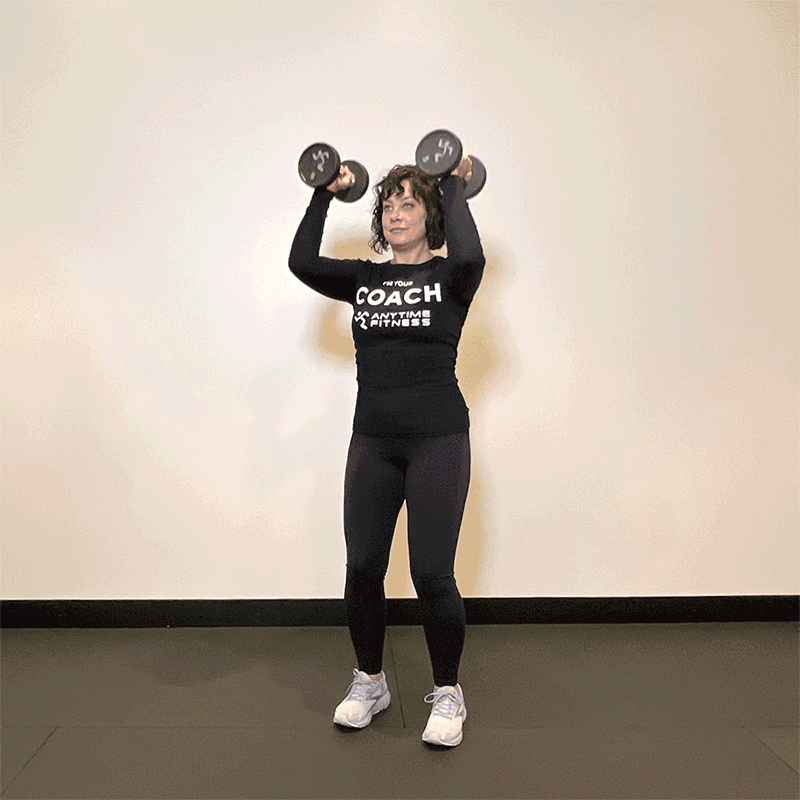
Shoulder Press
- Hold a dumbbell in each hand at your shoulders, or a barbell in front near your shoulders, and stand up straight with your feet hip-width apart.
- Raise the weights above your head, keeping a slight bend in your elbows.
- Return the weight to the starting position. Repeat.
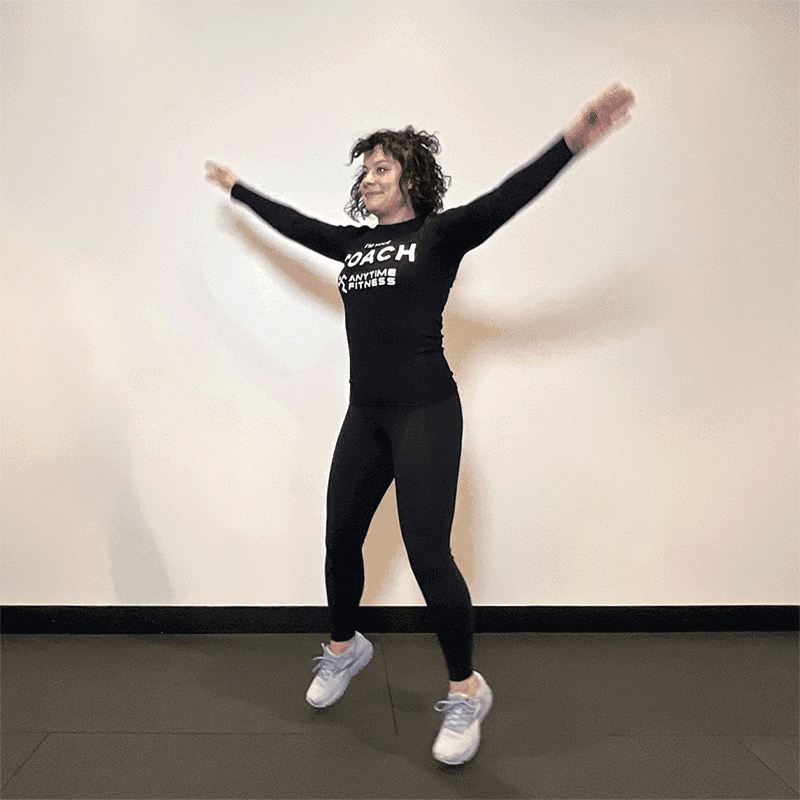
Jumping Jacks
- Stand upright with your feet together, and each arm at your side.
- Jump your feet out, shoulder-width apart, as you stretch each arm out and over your head with bent elbows.
- Jump your right leg and left leg back together and bring your arms back down to your sides simultaneously. Repeat.
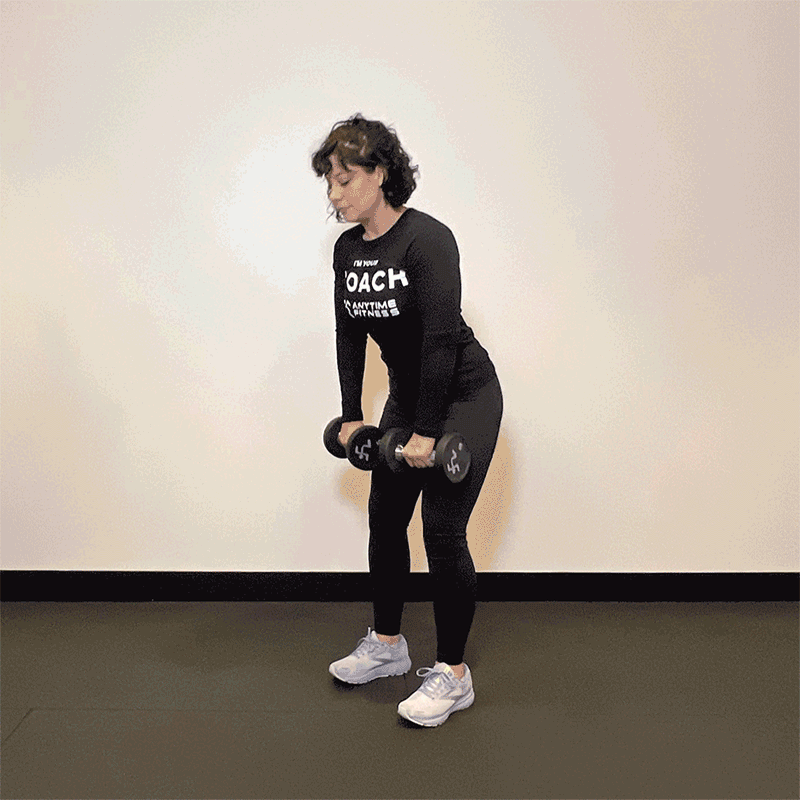
Romanian Deadlift
- Stand with your feet hip-width apart and hold a dumbbell in each hand or a barbell in front of your hips.
- Keep a flat back as you hinge at the hips and knees to lower the weight down along the front of your legs.
- As soon as your back is parallel with the floor (or when you feel a deep stretch in your hamstrings), hinge again at the hips to return to standing position. Repeat.
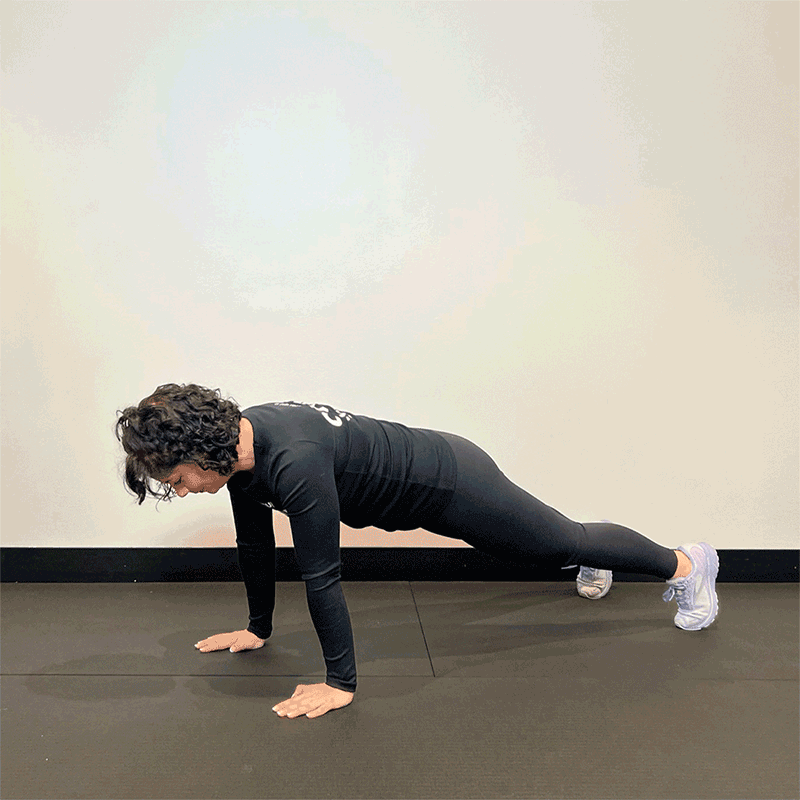
Push-Ups
- Get into a push-up position either on your toes or knees, with your palms flat on the floor. If you’re on your knees, point your toes down so the bottoms of your feet are facing up; this should help you keep good form.
- Lower your body to the ground, being sure your elbows point behind you and not out to the side.
- Push yourself back up to the starting position. Repeat.
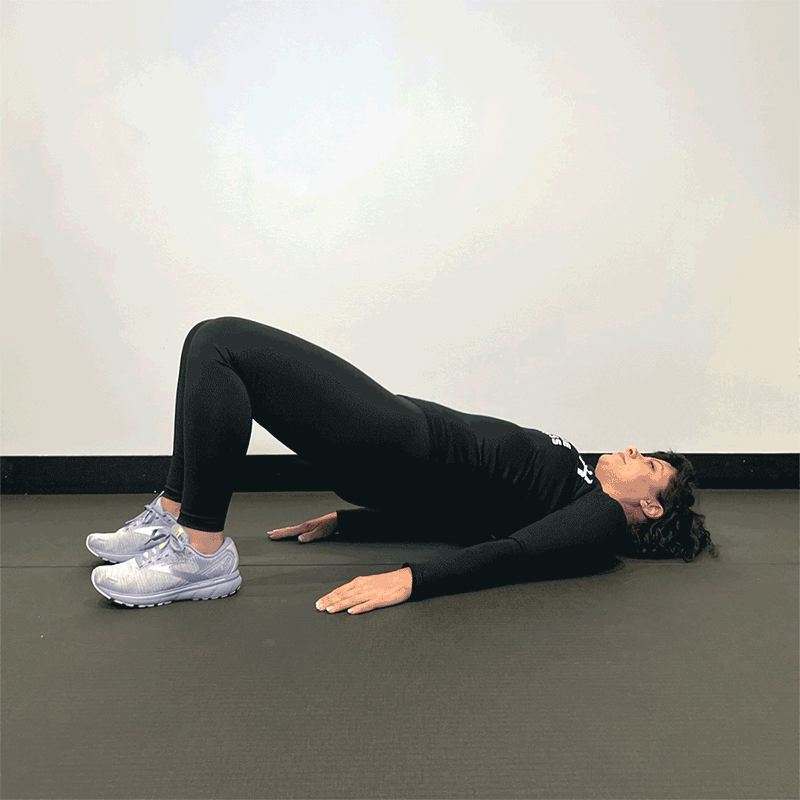
Glute Bridges
- Lie on your back, with arms out to the side, knees bent, and feet flat on the floor.
- Lift your hips and butt off the ground until your chest, hips, and knees form a straight line. Squeeze your glutes here for extra effect!
- Lower down to the starting position. Repeat.
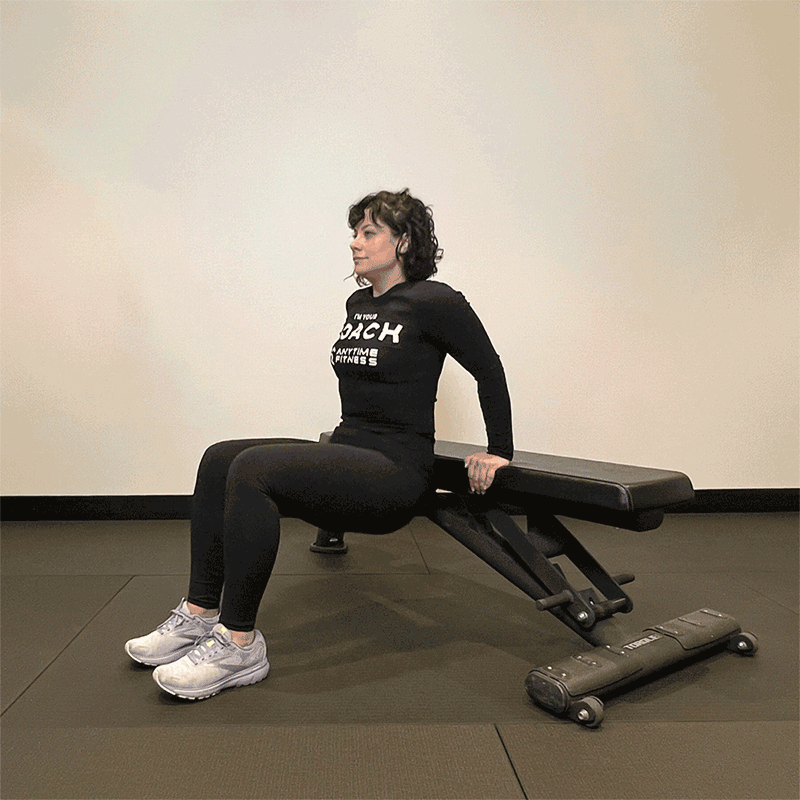
Triceps Dips
- Sit on the edge of a sturdy bench or chair with your hands on each side of you.
- Walk your feet away from the bench, so that your butt is now hovering in the air; you should be up on your heels. Lower yourself down by bending at the elbows—be sure they point behind you and not to the side.
- Engage your triceps to push yourself back to the beginning position. Repeat.
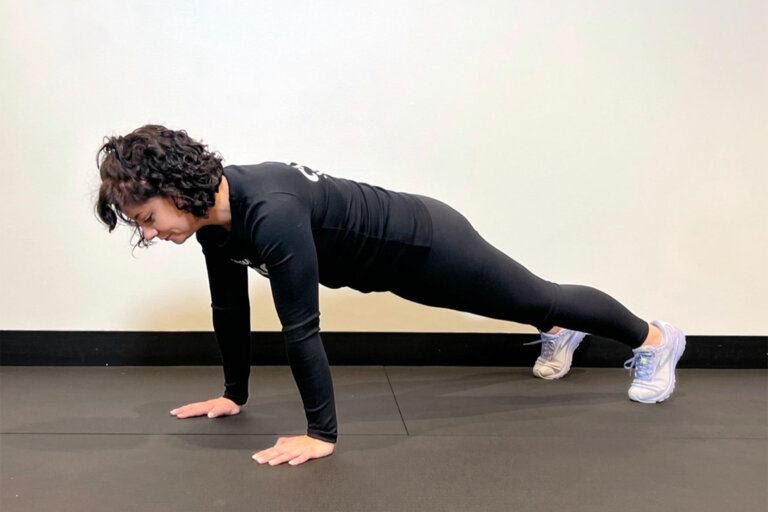
Plank
- Get into a plank position on your forearms and toes.
- Engage your abs, clench your glutes, and try to keep your body in a straight line. Make sure your body’s weight is distributed evenly across your forearms and toes. Hold for the set time.
How to take your circuit workouts to the next level
Once you’ve progressed past the beginner state, use a barbell, dumbbell, or kettlebell where you see fit. For optimal muscle gain, you want to get yourself almost to the point of failure with each exercise, but be careful not to push yourself too far past the point of fatigue. The goal is to challenge yourself and get in as many reps as possible, but still be able to perform them with proper form. Aim to take as little rest as possible in between movements, but no more than 30 seconds.
Ready for more? Try this 30-minute circuit workout to really get the heart pumping.
